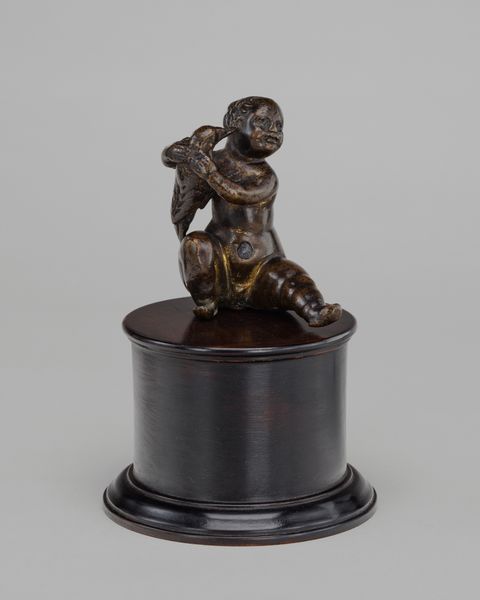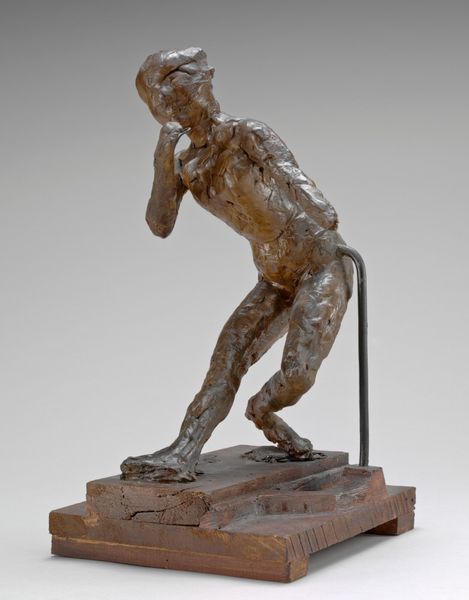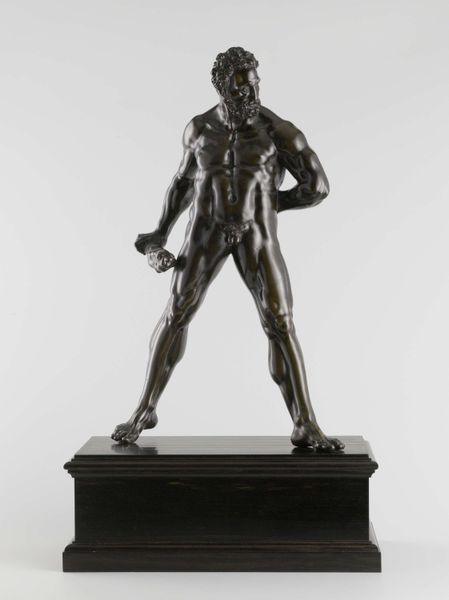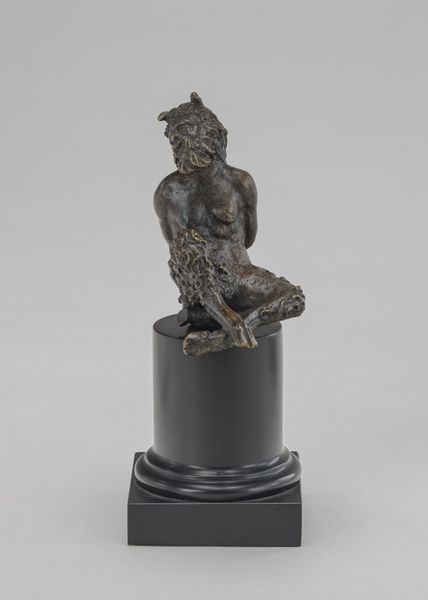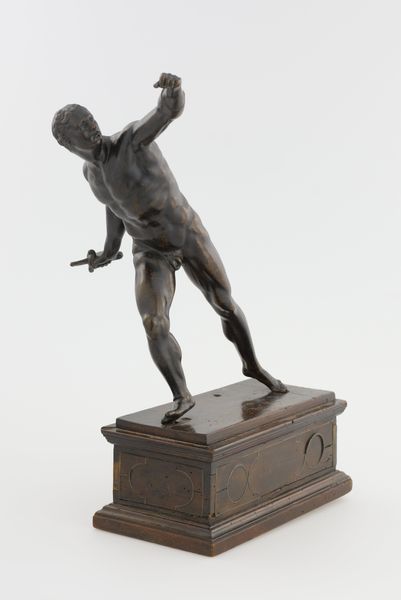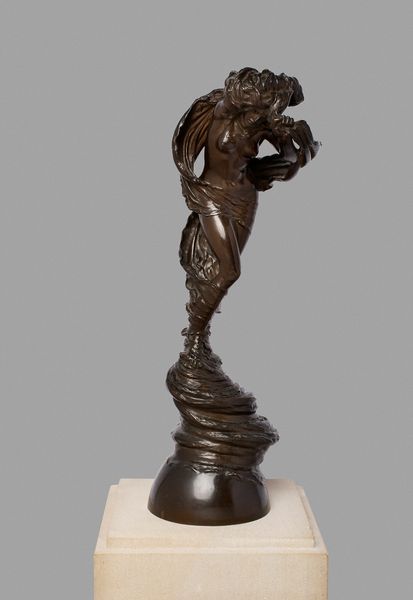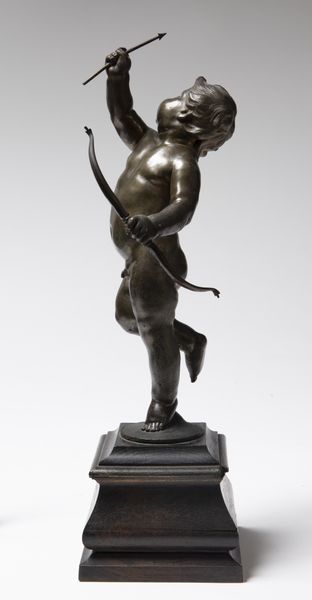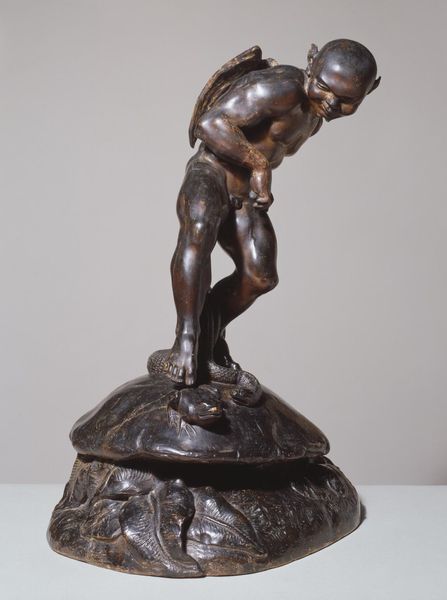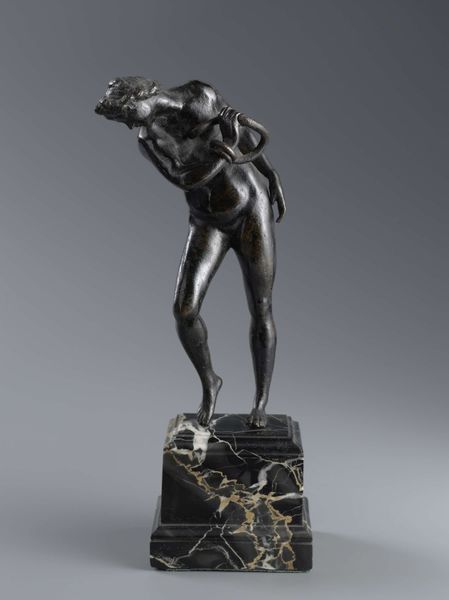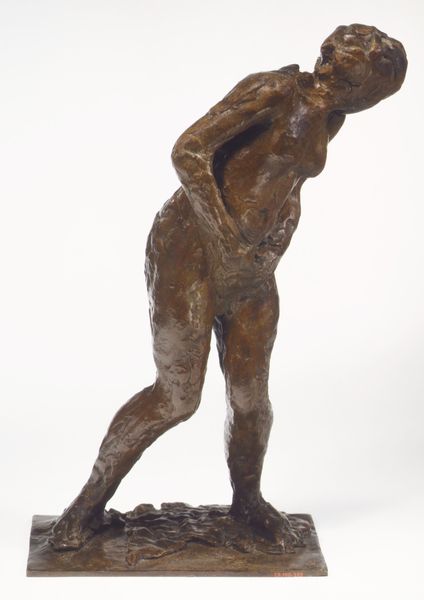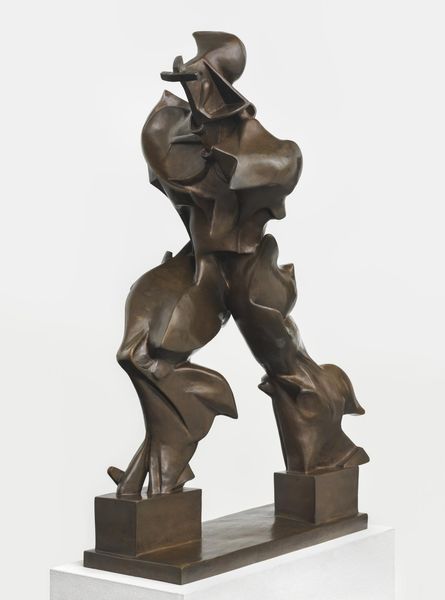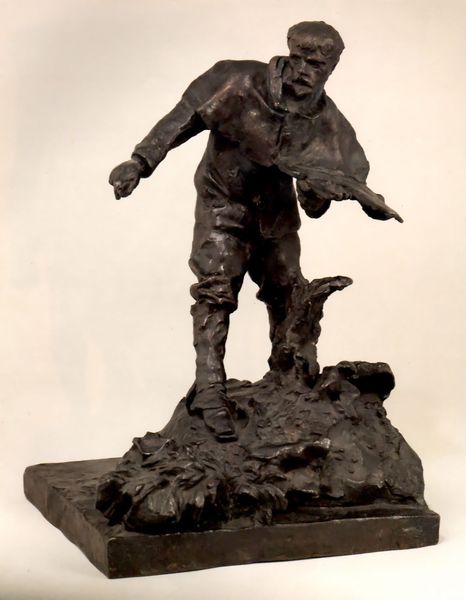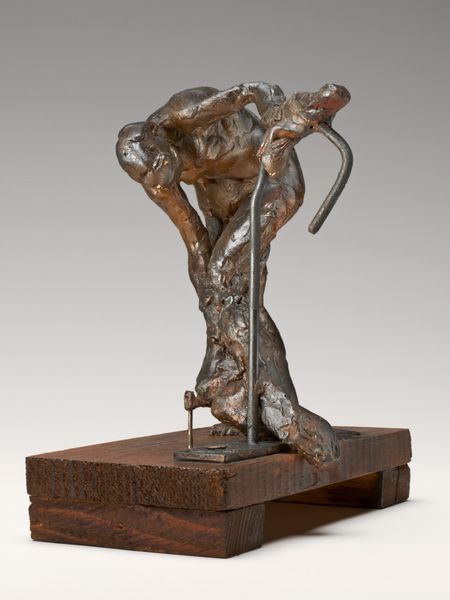
bronze, sculpture
#
portrait
#
sculpture
#
bronze
#
figuration
#
sculpture
#
romanticism
#
academic-art
Dimensions: H. 15.9 cm (6 1/4 in.)
Copyright: Public Domain
Christophe Fratin created this bronze sculpture of a "Dancing Monkey" sometime in the first half of the 19th century. During the 1830s, sculptors began to produce smaller bronze works for a rapidly expanding middle-class audience. Fratin was a pioneer in animal sculpture, or animalière, a genre that became extremely popular. This sculpture reveals the fascination of French Romantic artists with animal subjects. Monkeys appear frequently in 19th-century French art as symbols of human vanity and folly. They also had associations with the "lower classes," and the animal's street-performing role might have been viewed as commenting on this social hierarchy. Its plinth is reminiscent of a public speaker's platform, bringing a sense of irony to its social critique. Historians of art can better understand this sculpture through consulting exhibition reviews, the artist's biography, and studies of the industrial production of bronze sculpture in nineteenth-century France. The Dancing Monkey and similar artworks remind us that art is never made in a vacuum.
Comments
No comments
Be the first to comment and join the conversation on the ultimate creative platform.
